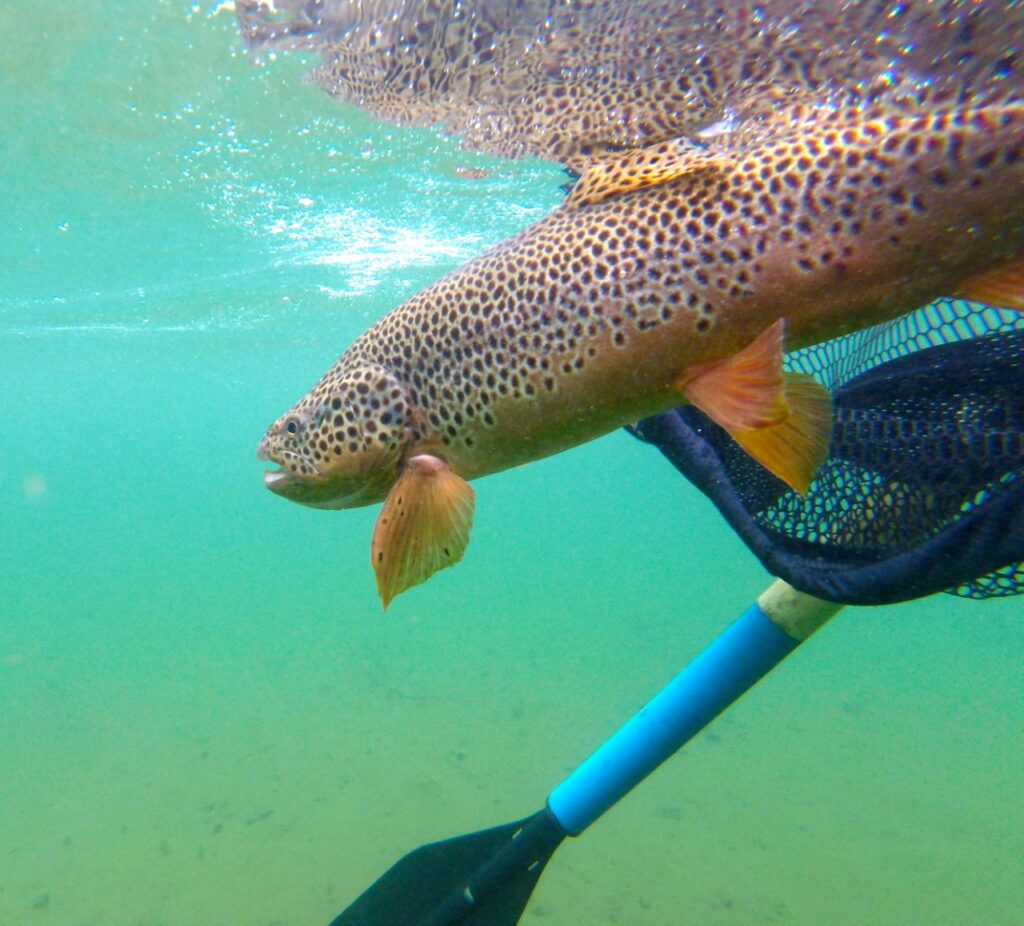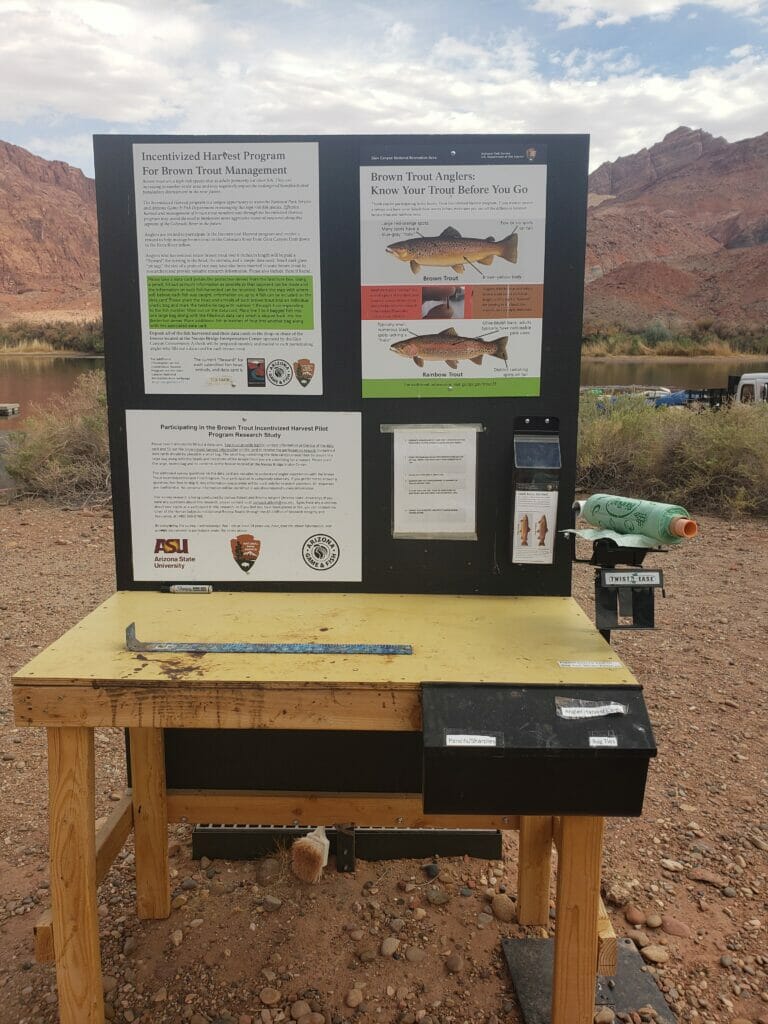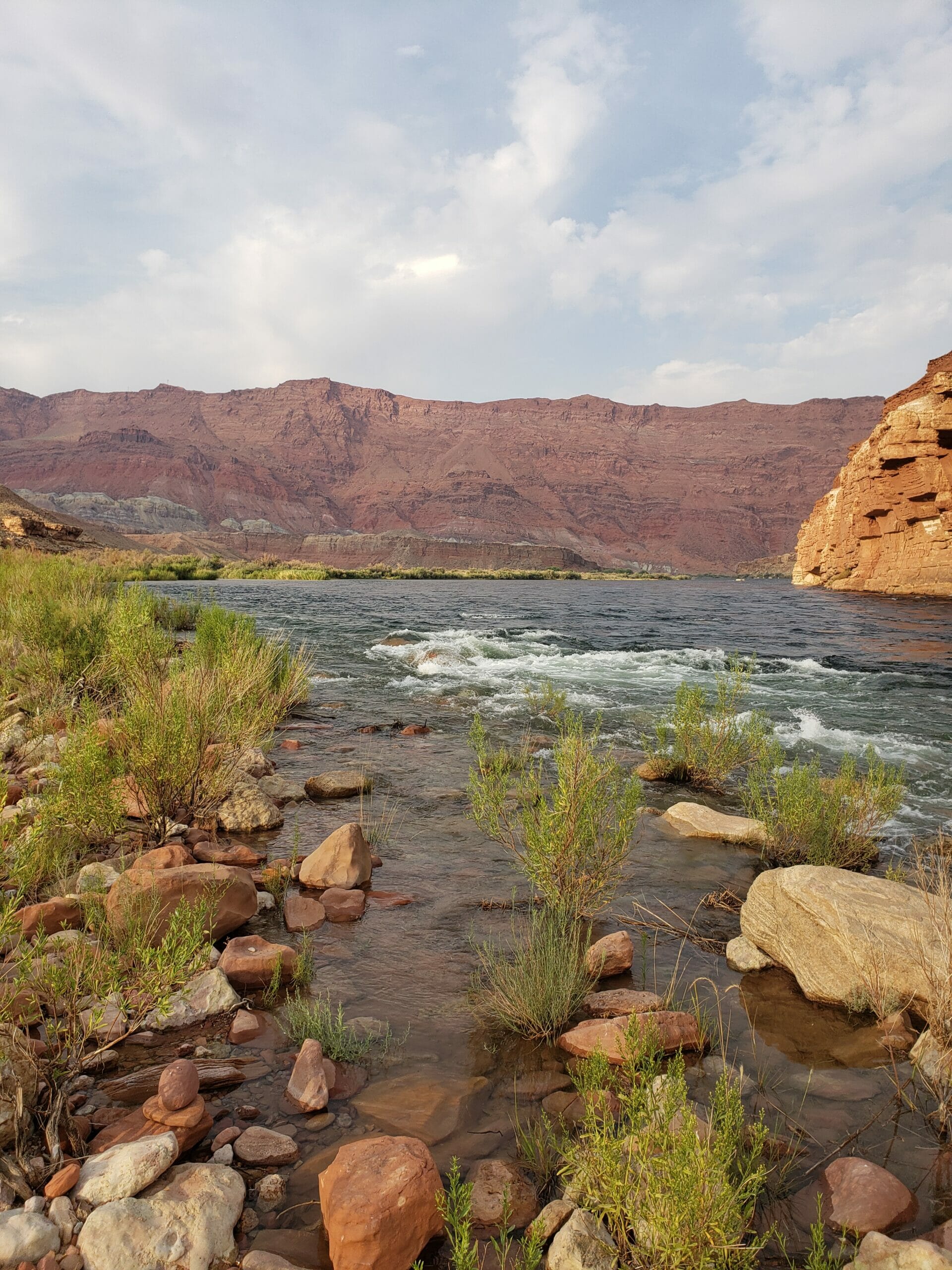by Jim Strogen
The Colorado River below Lake Powell is a blue-ribbon rainbow trout fishery loved by anglers across the country. While this reach is among the prettiest places that I have fished, and one that I try to return to as often as possible, there are issues on the river that are important to monitor and are cause for concern.
Trout Unlimited has members on the Glen Canyon Dam Adaptive Management Program’s Adaptive Management Work Group and the Technical Work Group as recreational fishing representatives. Besides advocating for actions to protect the rainbow trout fishery, these representatives are very active in discussions on a variety of issues that are important to the native fish further downstream, and the overall health of the river system.
There are 26 stakeholder groups represented on the Adaptive Management Work Group as well as the Technical Work Group. These include five federal agencies, six Native American tribes, two environmental groups, two recreational interest groups including recreational fishing, nine state agencies, and two federal purchase contractor groups.
Brown trout effects on the fishery
A shift in the trout population dynamics at Lees Ferry seems to be occurring. Brown trout, which accounted for about 2 to 3 percent of the trout population at Lees Ferry before 2014, have increased, with the latest brown trout estimates in the range of 15 percent of the total Lees Ferry trout population.

While some anglers view this as good news, others realize that this jump has some potentially sobering consequences. The increase in the number of brown trout, and their propensity to eat other fish as they grow larger, could potentially reduce the younger year classes of rainbow trout at Lees Ferry.
If brown trout numbers were to increase to the point that brown trout are displaced downstream to the area of the Little Colorado River confluence, their presence could set back the recovery efforts for the protected humpback chub population.
The National Park Service has an approved mitigation plan ready to implement to control brown trout numbers. Currently, the Park Service is utilizing an incentivized harvest program to encourage anglers to catch and keep all brown trout in the Lees Ferry Reach and receive a payment of between $25 to $33 per fish. This program has resulted in a mere 362 brown trout turned in from November 2020 to May 2021. Most anglers that have participated have been spin fishers, while fly fishers with guides have largely not participated in this program.
Learn more about the brown trout incentivized harvest program
The consequences of this incentivized harvest program failing to reduce the number of brown trout to the pre-2014 levels is that the NPS could then begin mechanical disruption of trout redds, and even extensive, prolonged nightly electro-fishing of the entire reach for periods of six to eight weeks.
Impacts of Lake Powell releases on the river below
Like other impoundments in the southwest, the level of Lake Powell has decreased and the projections for the next few years look bleak. This has a tremendous impact on the river below in a number of ways.

As the lake level recedes, that puts warmer water nearer the penstocks, which when released from the dam can result in warmer river temperatures. During fall-2021 and fall-2022 projections at Lees Ferry are that these temperatures could be in the range of 17 degrees Celsius (62.6 F) or possibly higher, which is nearing adverse temperatures for trout health.
While that is certainly concerning for the trout below the dam, it could also have a detrimental impact on the native fish downstream. The cold water below the dam, so far, has inhibited warm water invasive fish, like smallmouth bass that find their way through the dam into the river, from gaining a foothold. If these warming trends continue, and these fish become established as they are in the Upper Basin above Lake Powell, they will potentially become the dominant predators to the native fish downstream.
Water storage decisions will determine the distribution and persistence of imperiled river fishes.
Besides rising temperatures that threaten the Lees Ferry fishery, there are also certain conditions with inflow into Lake Powell that create plumes that eventually find their way to the penstocks that impact nutrient and dissolved oxygen levels in the river. While these plumes of impaired dissolved oxygen levels are somewhat predictable and would likely impact only the upper section of the Lees Ferry Reach, a plan for dealing with low dissolved oxygen levels passing through the dam still needs to be developed.

Poor nutrient delivery through the dam, and the competition of invasive quagga mussels and New Zealand mud snails for those nutrients add to the food base issues for the rainbow trout that are largely dependent on midges as their primary food source.
Increased brown trout numbers, warming river temperatures, food base concerns, dissolved oxygen levels, and the very real possibility of warm water predators moving into and through the Lees Ferry Reach are issues that the Glen Canyon Dam Adaptive Management Program continues to monitor and work towards finding solutions to improve conditions of the river below Glen Canyon Dam.
Possible solutions come with a cost
Strategies such as manipulating the weekend flow released from Glen Canyon Dam during the summer have shown some promise for providing a consistent wetted surface to maximize midge egg production.
There are dams across the country that have incorporated or retrofitted devices to allow for control of the temperature passing through their dams, as well as help address dissolved oxygen and nutrient issues. All these strategies come at considerable cost but offer hope for the future of the river below Glen Canyon Dam.
The recreational fishing representatives on the Glen Canyon Dam Adaptive Management Program provide updates to the AZTU Council, and will continue to work on the issues important to the rainbow trout fishery, the native fish, and the health of the river.



